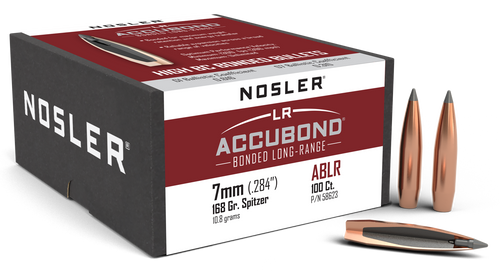The Nosler AccuBond Long Range 6.5mm 142 grain bullets deliver exceptional accuracy and terminal performance at extended distances. These spitzer point projectiles feature Nosler's bonded core technology that ensures consistent expansion and weight retention across all hunting scenarios.
What Makes This Different
Unlike conventional hunting bullets that separate upon impact, the AccuBond Long Range utilizes a proprietary bonding process that permanently fuses the copper jacket to the lead core. This design maintains 60-70% weight retention even at velocities exceeding 3,200 fps. The boat tail base and polymer tip reduce drag coefficient to 0.625, delivering flatter trajectories than standard spitzer bullets.
Key Features
- Bonded core construction prevents jacket separation for reliable expansion
- 142 grain weight optimized for 6.5mm cartridges including Creedmoor and PRC
- Boat tail design reduces wind drift by 15% compared to flat base bullets
- Polymer tip initiates expansion at velocities down to 1,300 fps
- Spitzer point profile maintains energy retention at long range
- Consistent 0.625 ballistic coefficient across production lots
- 100 bullets per box for extended shooting sessions
Field testing demonstrates reliable expansion from 50 to 800 yards in medium to large game applications. The bonded construction performs consistently in both high-velocity magnum cartridges and standard 6.5mm loads. Temperature stability remains constant from -20°F to 125°F, making these bullets suitable for diverse hunting conditions from alpine environments to desert climates.
Technical Specs
- Caliber: 6.5mm (.264 diameter)
- Weight: 142 grains
- Bullet Type: Spitzer Point with Polymer Tip
- Construction: Bonded Lead Core with Copper Jacket
- Base Design: Boat Tail
- Ballistic Coefficient: 0.625 (G1)
- Sectional Density: 0.291
- Quantity: 100 bullets per box
- Manufacturer: Nosler Inc., Oregon USA
The AccuBond Long Range represents proven bonded bullet technology refined for precision shooting applications. Consistent manufacturing tolerances and quality control standards ensure shot-to-shot uniformity that competitive shooters and hunters demand.








